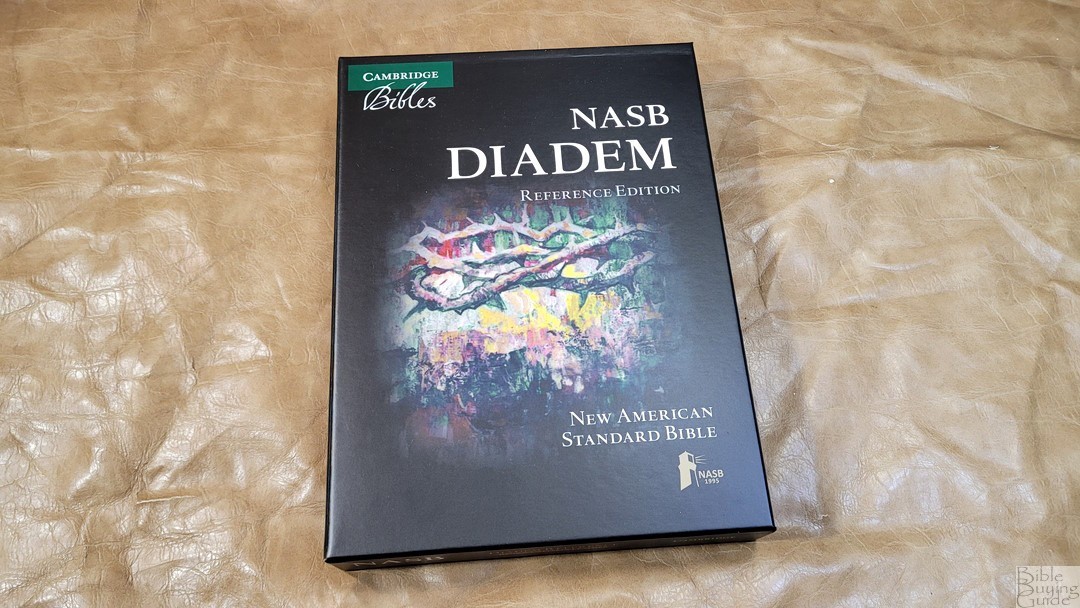
The Cambridge Diadem series is a larger version of the popular Pitt Minion. The first Diadem was the ESV. Cambridge has now released the second version of the Diadem in the 1995 NASB. It matches the NASB Pitt Minion but has a few differences from the ESV Diadem. It’s available in several covers. I’m reviewing the NASB Diadem in brown calfskin. This is model NS545:XRE, ISBN: 9781009294720, which was printed and bound in the Netherlands by Royal Jongbloed.
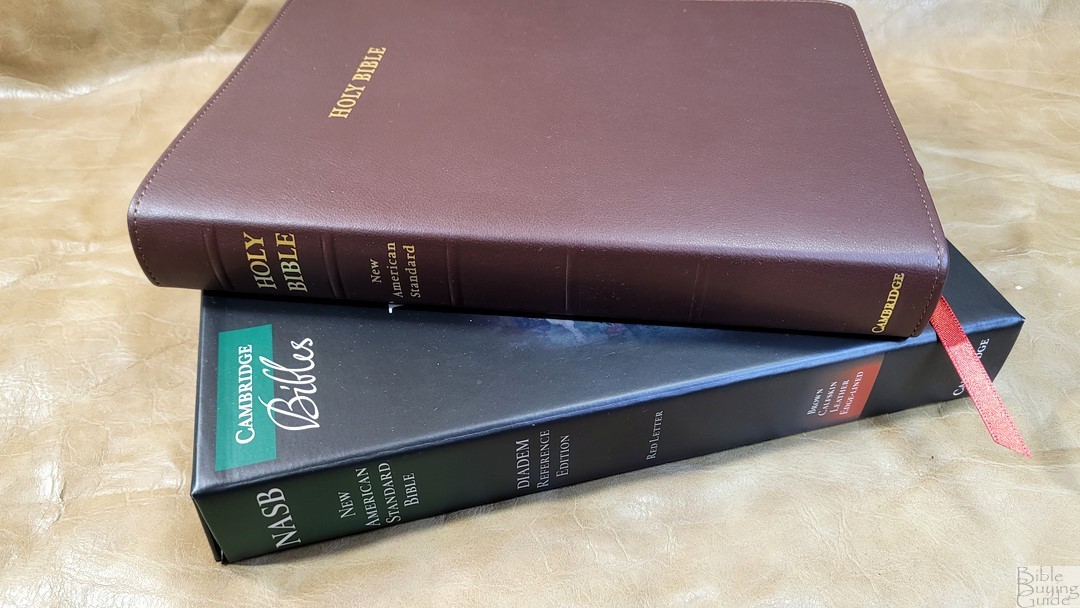
Cambridge provided this Bible in exchange for an honest review. I was not required to give a positive review, only an honest one. All opinions are my own.
_________________________________________________________
This Bible is available at (includes some affiliate links)
and many local Bible bookstores
_________________________________________________________
Table of Contents
- Video Review
- Binding
- Paper
- Typography and Layout
- References and Footnotes
- Concordance
- Bible Atlas
- Comparisons
- Conclusion
Video Review
Binding
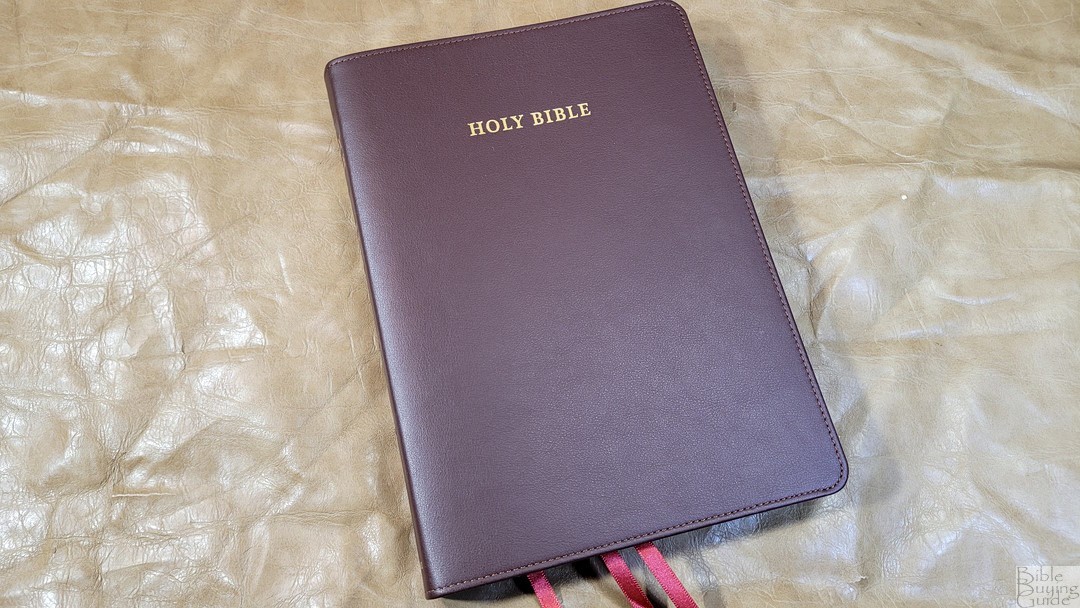
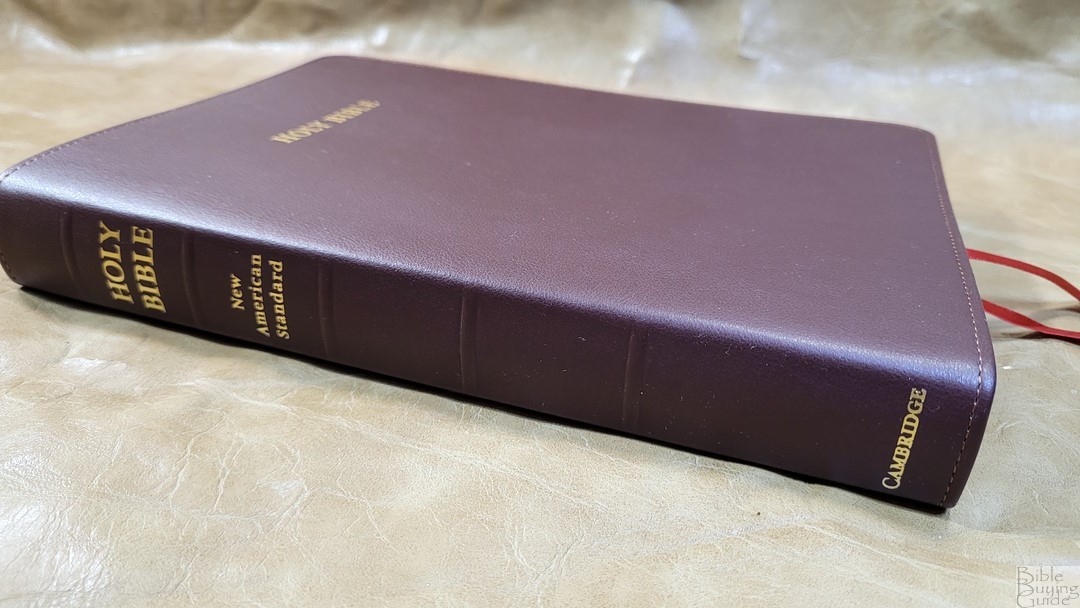
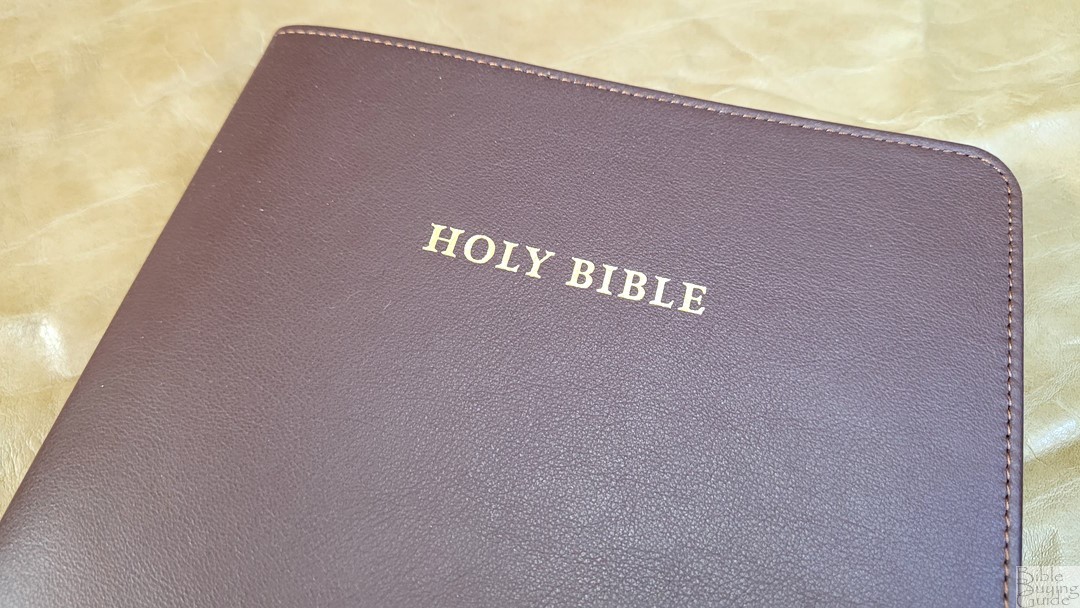
The brown calfskin has a smooth grain with a light texture. The brown stands out to me and I prefer it to black. It includes perimeter stitching and a 3/8″ yapp (overhang). The front has HOLY BIBLE printed in gold. The spine has HOLY BIBLE, New American Standard, and CAMBRIDGE printed in gold. It includes 5 non-raised spine hub indications.
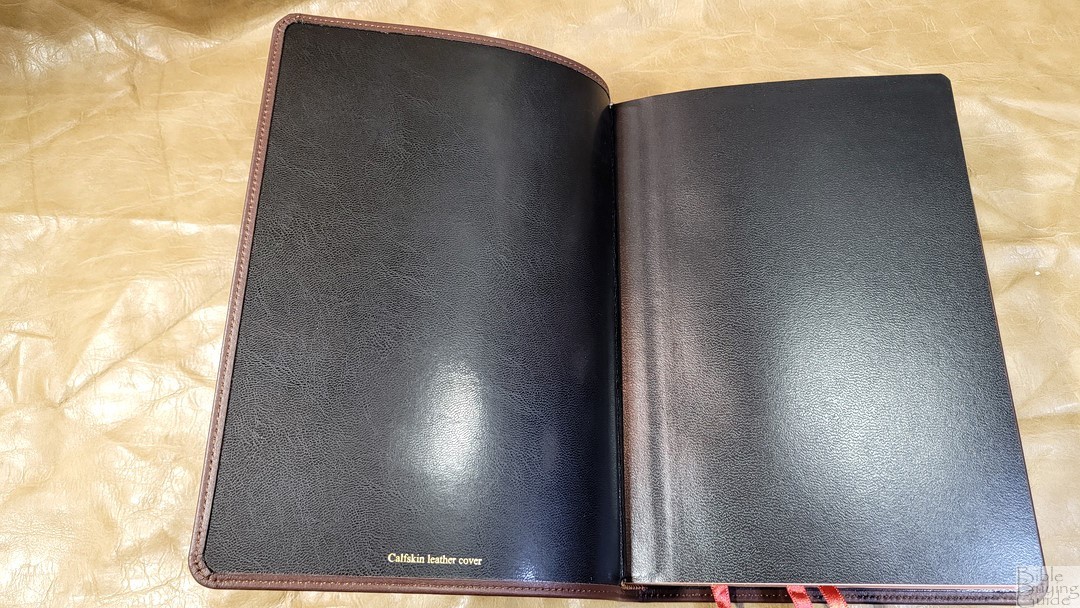
The liner that’s edge-lined with a synthetic material. It’s soft and flexible, giving the Bible some flexibility. The edge-lined tab is a little stiff, so it has trouble staying open in Genesis. It will require enough use before it will stay open in Genesis 1. The text block is sewn.
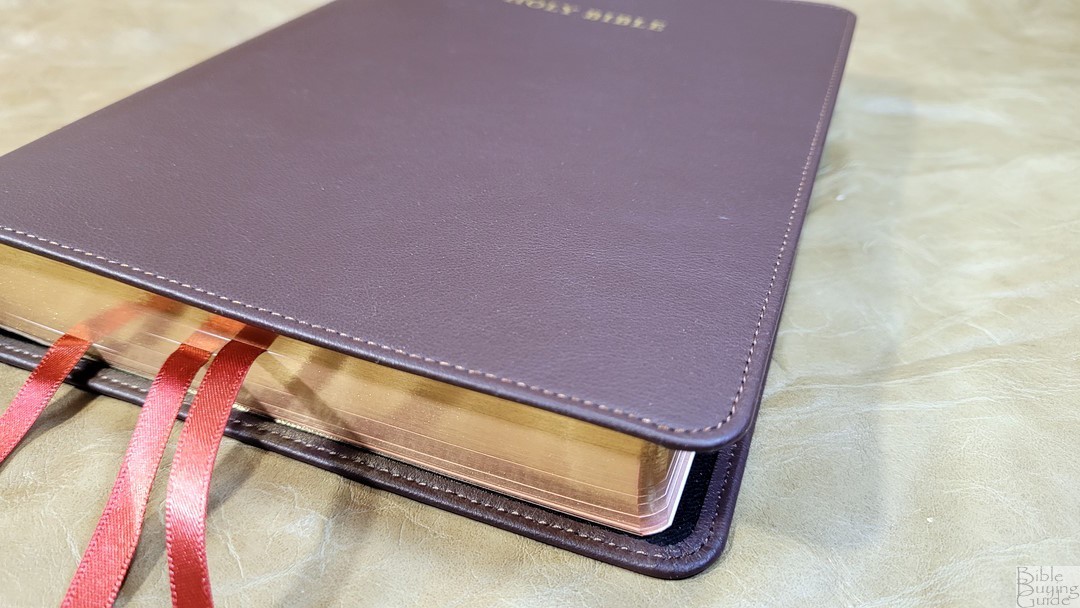
It has 3 copper/rust ribbons at 1/4″. They’re long enough to pull to the corner to easily open the Bible. The overall size is 6 1/4 x 8 3/4 x 1 1/16″ and the trim size is 5 3/4 x 8 1/4″. It weighs 1 lb, 11.5 oz. It’s slightly wider than most reference editions, but the size and shape feel well-balanced.
Paper
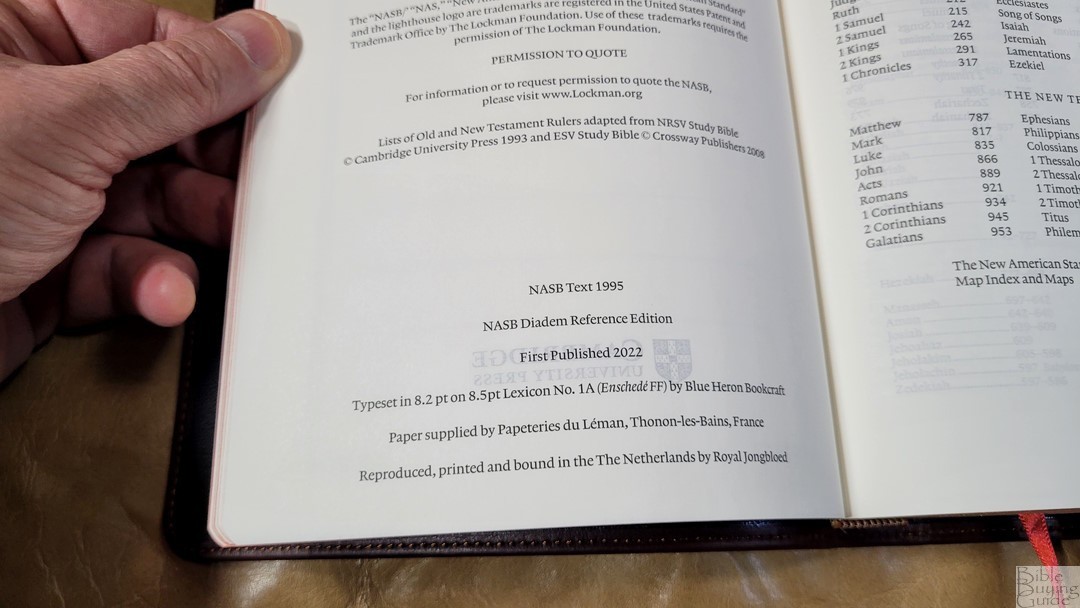
The paper is 32 gsm from Papeteries du Leman, Thonon-les-Bains, France. It has a premium coating and looks and feels elegant. It’s highly opaque and has a slightly cream color that’s great for reading. I had no trouble turning the pages. The page edges are art-gilt with red under gold.
Family Pages
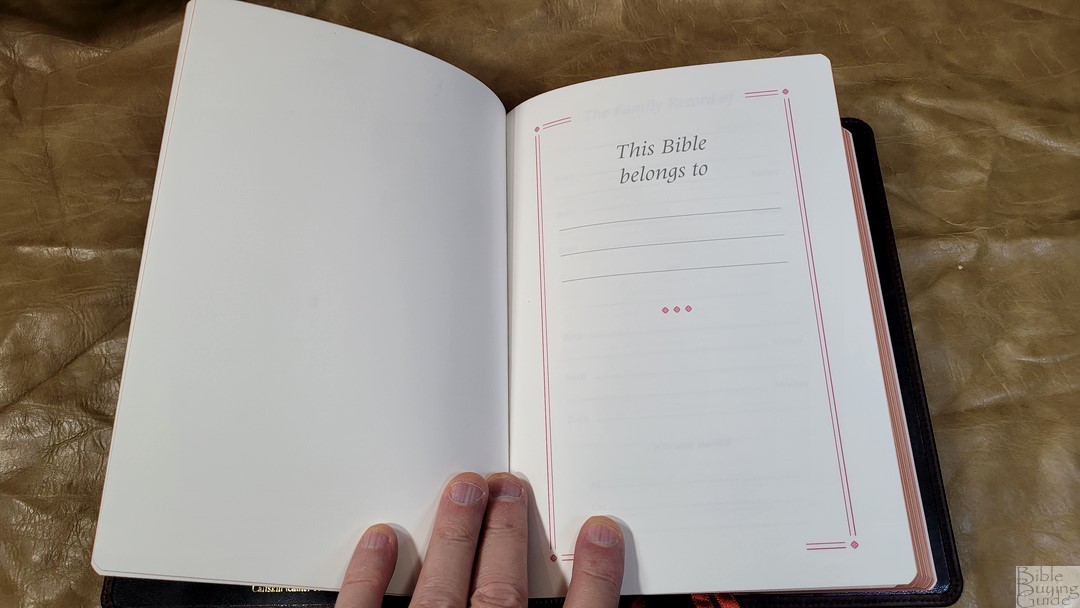
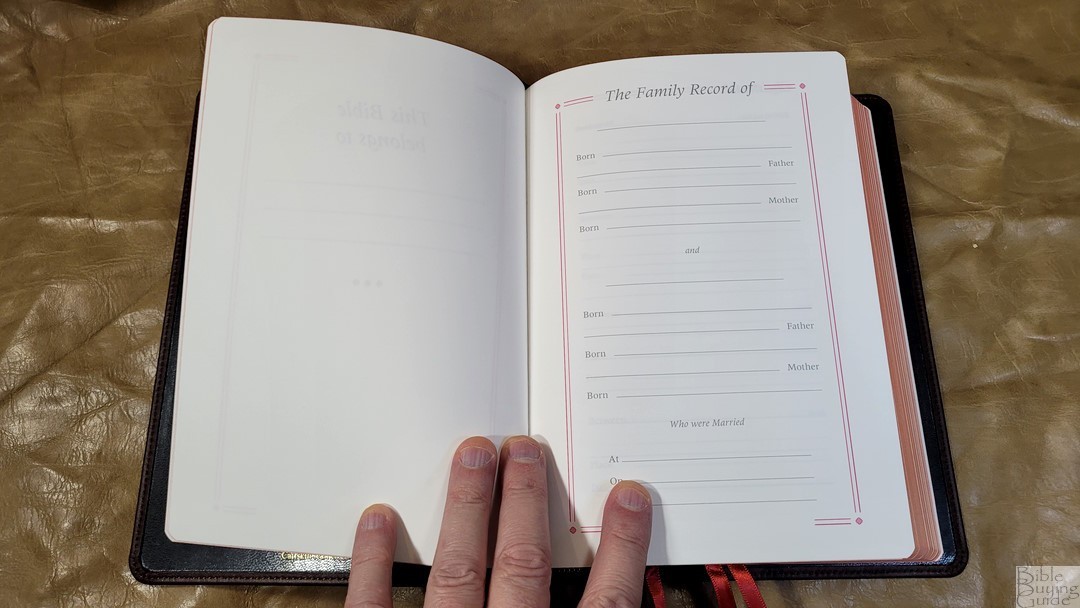
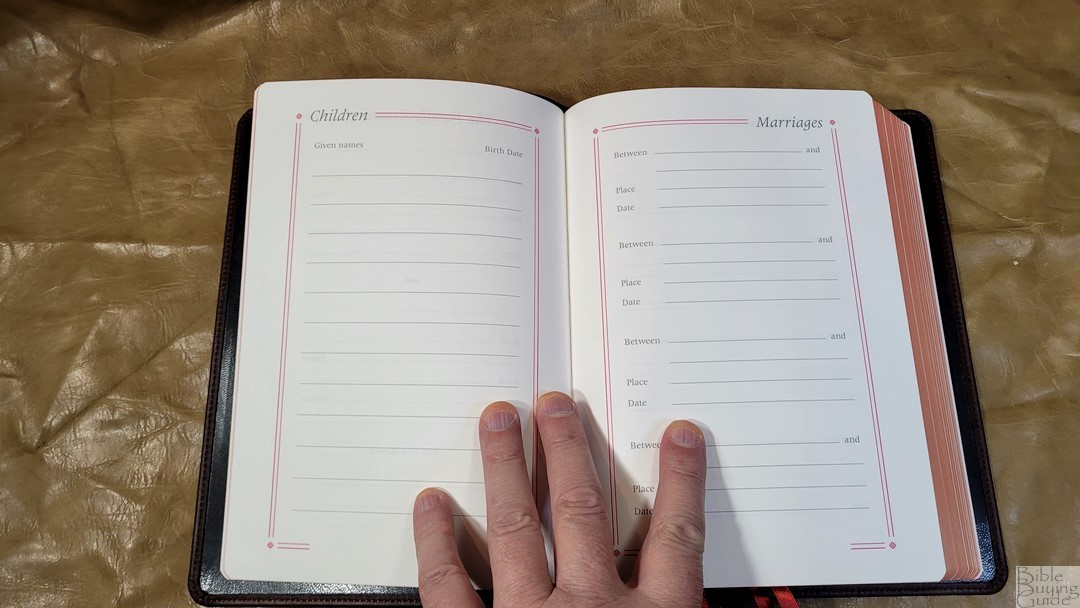
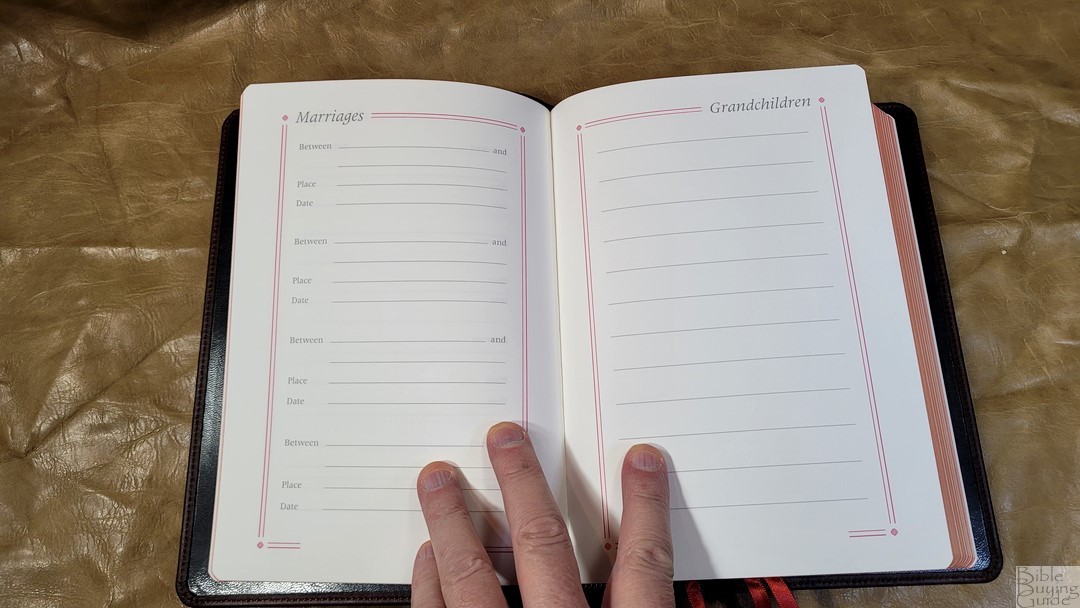
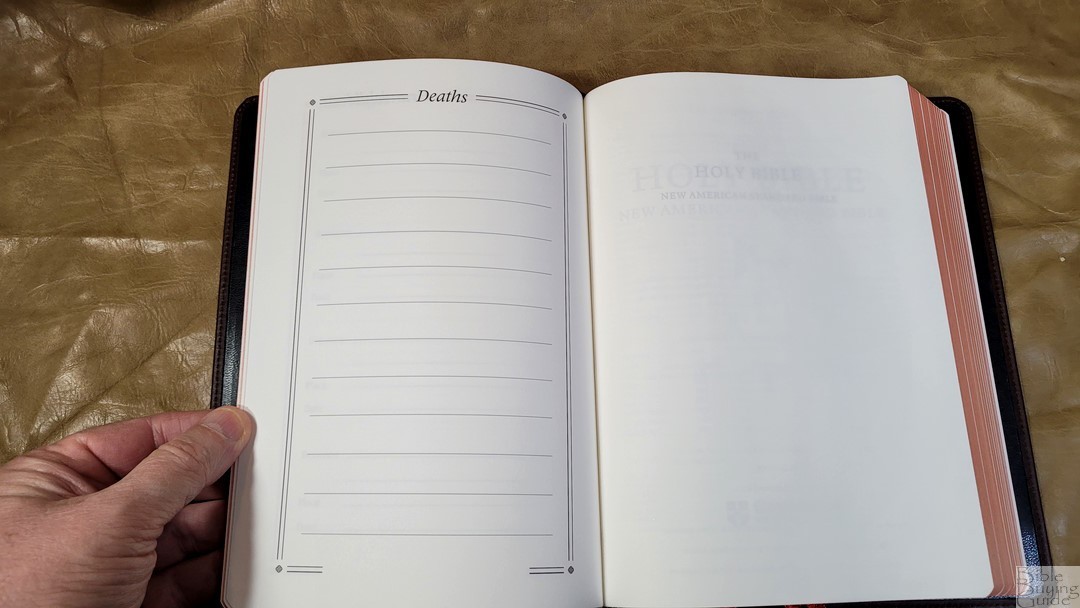
In the front are the standard Cambridge family pages. They include a presentation page, family records, children, marriages, and grandchildren, all with red highlights, and deaths with black highlights. These are printed on thick, non-glossy pages that are easy to write on.
Chronology of Rulers During Biblical Times
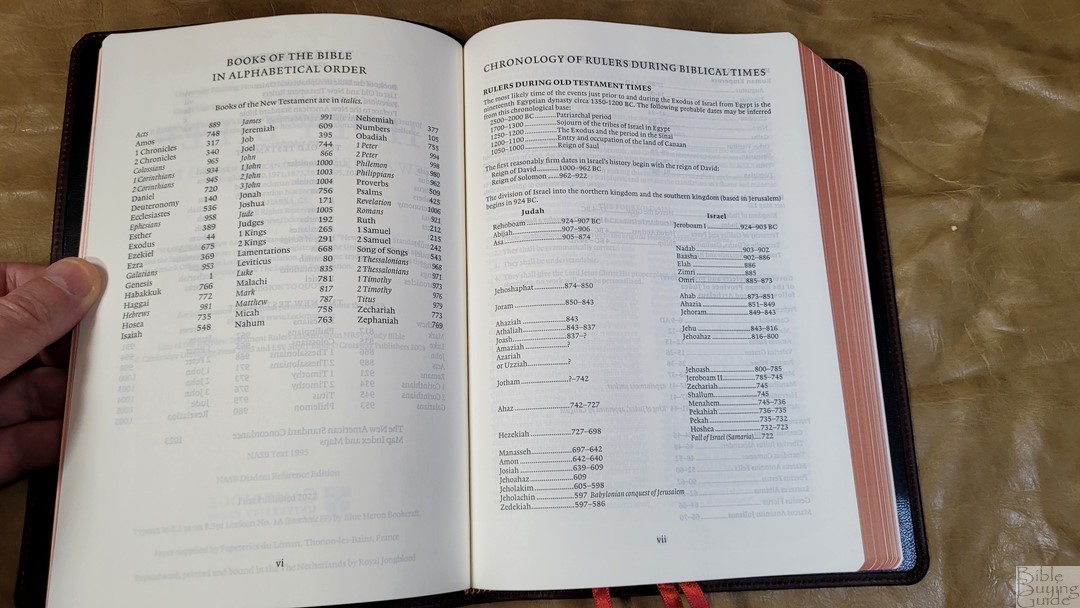
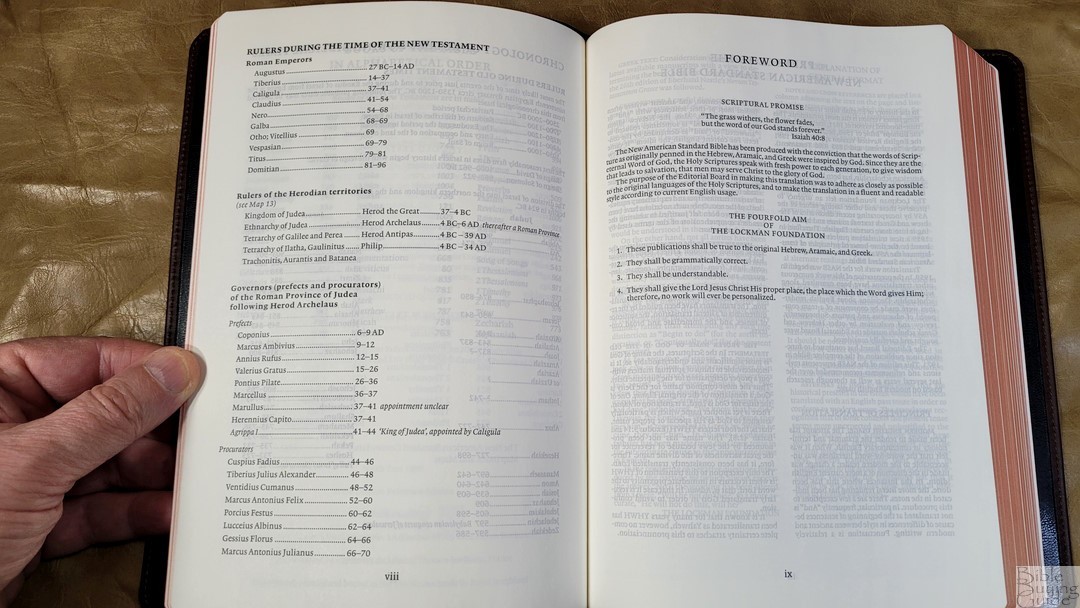
This is a table that divides the rulers into two categories. It shows the name and date they ruled. Categories include:
- Rulers During Old Testament Times
- Judah
- Israel
- Rulers During the Time of the New Testament
- Roman Emperors
- Rulers of the Herodian Territories
- Governors
Note Pages
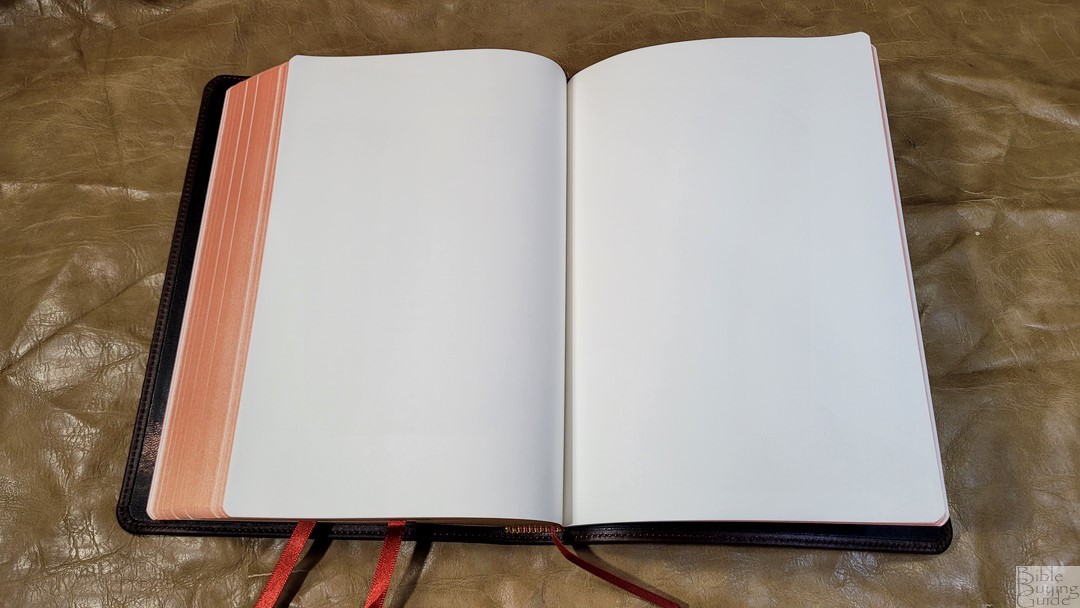
In the back are 20 blank pages for notes. This is the same paper as the rest of the Bible and it doesn’t include ruled lines or headings. This is great for recording notes, lists, events, illustrations, etc.
Typography and Layout
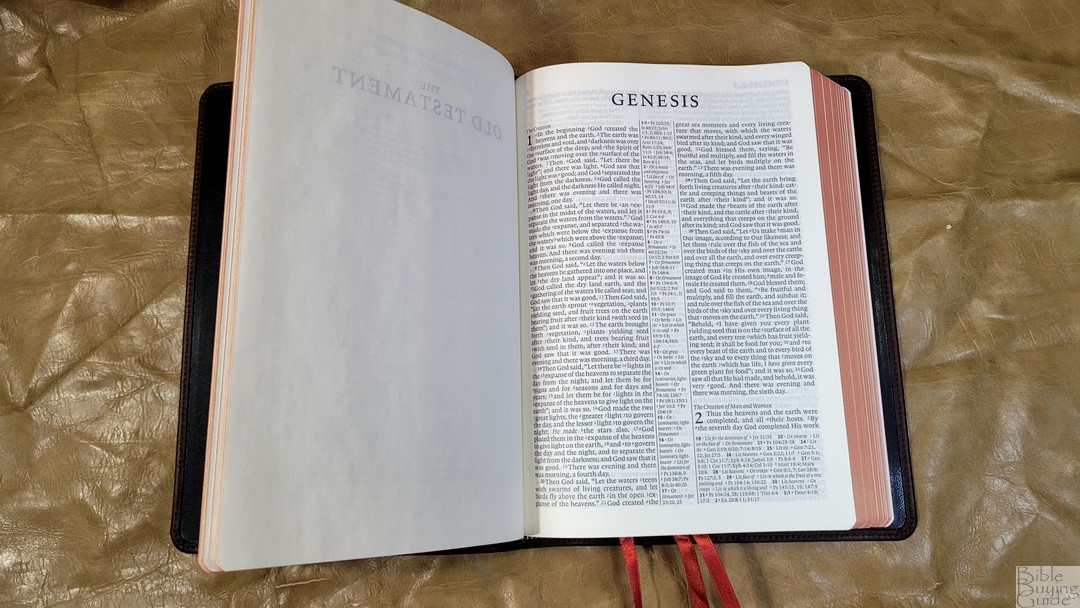
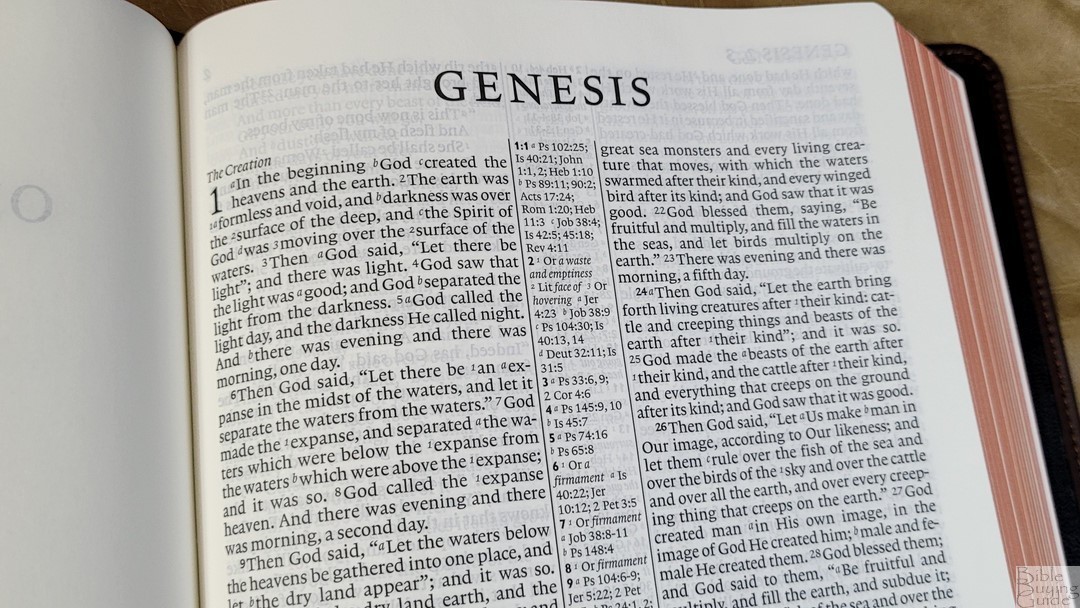
The text is presented in double-column paragraph format with poetry set to stanzas and personal letters are indented. Old Testament quotes in all caps. Section headings are in italics and don’t stand out too much. Cross-references and footnotes are placed in the center column with some appearing under the last verse on the page. The header shows the book name and chapter numbers in the outer margin and the page number in the inner margin. Books start on the page where the previous book ends.

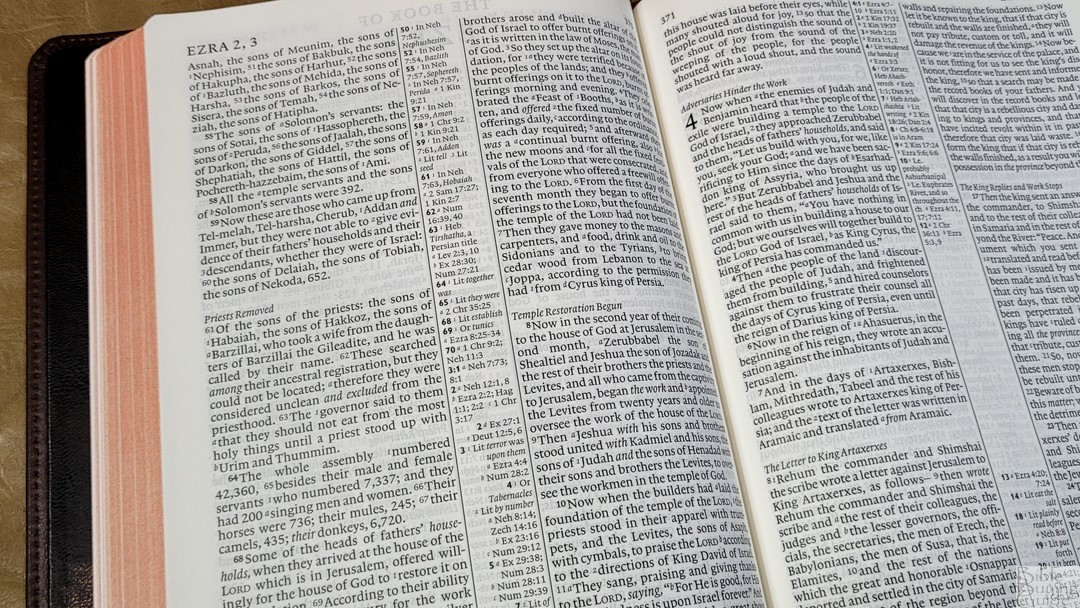

The font is 8.2 Lexicon No. 1 with an 8.5-point leading, typeset by Blue Heron Bookcraft. This is a red-letter edition. Both the black and red-letter are medium in darkness and they’re highly consistent throughout. This setting was designed before line-matching was popular. Many lines do match, though. Those that do not are only noticeable in the poetic settings and the show-through is minimal. It has between 7-9 words on average, and there’s enough space between them so they’re not too crowded. It has enough inner margin that the text doesn’t get lost in the bend of the gutter.
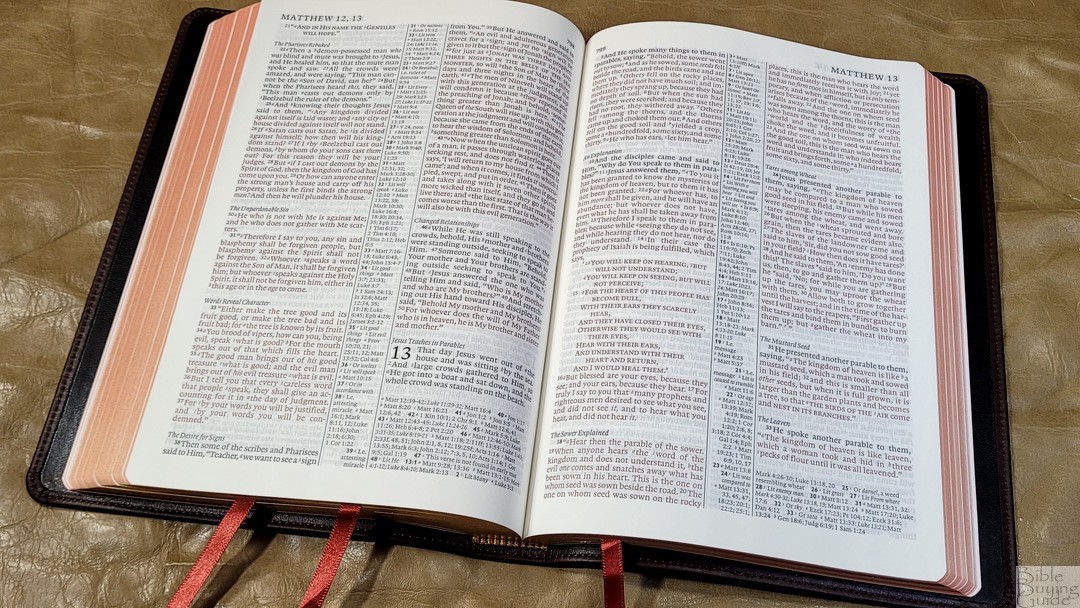
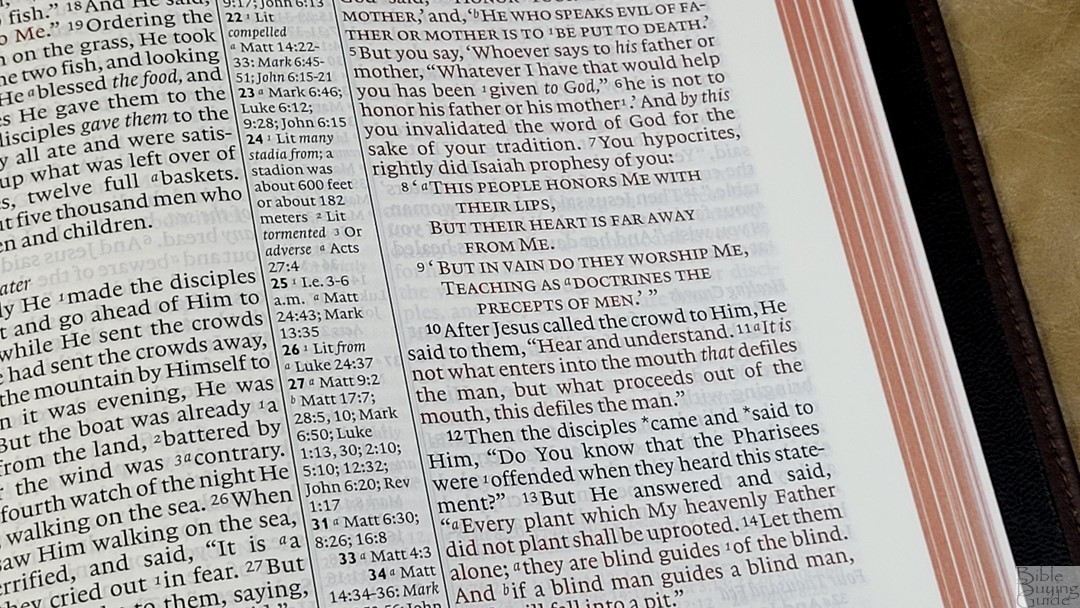
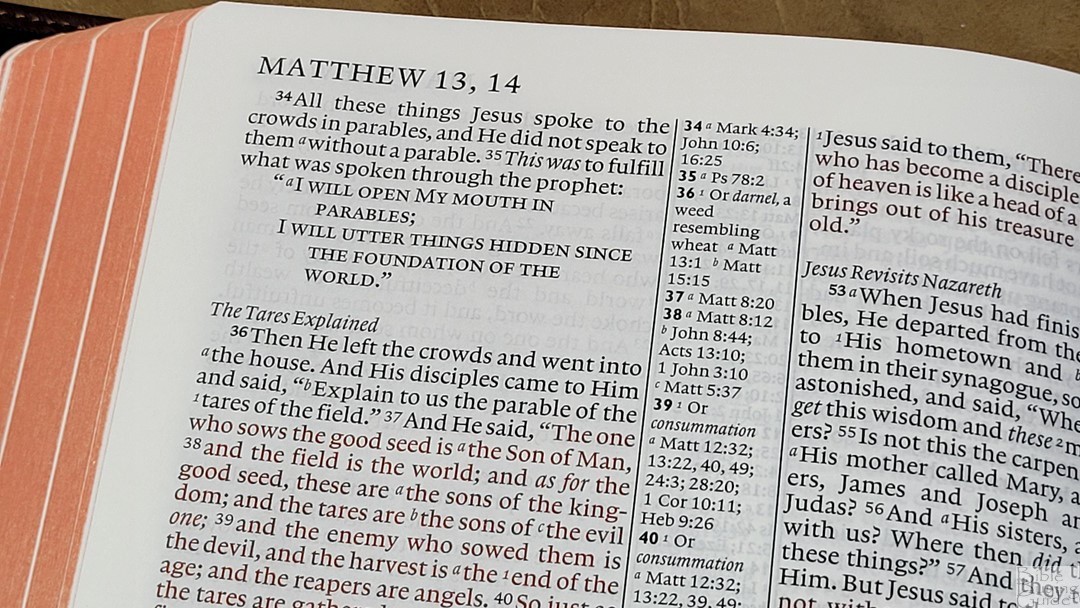
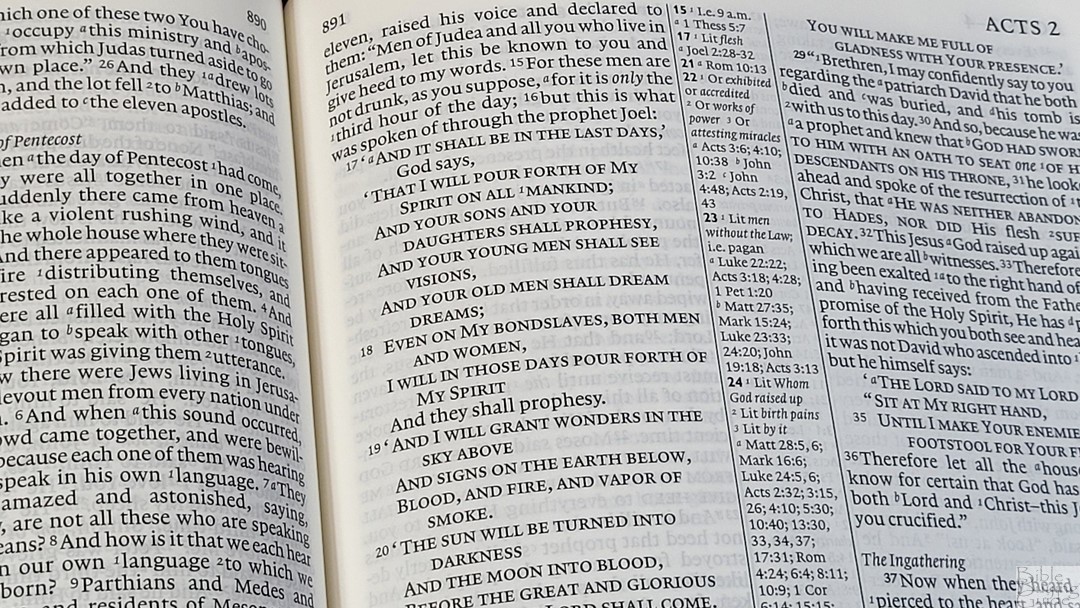
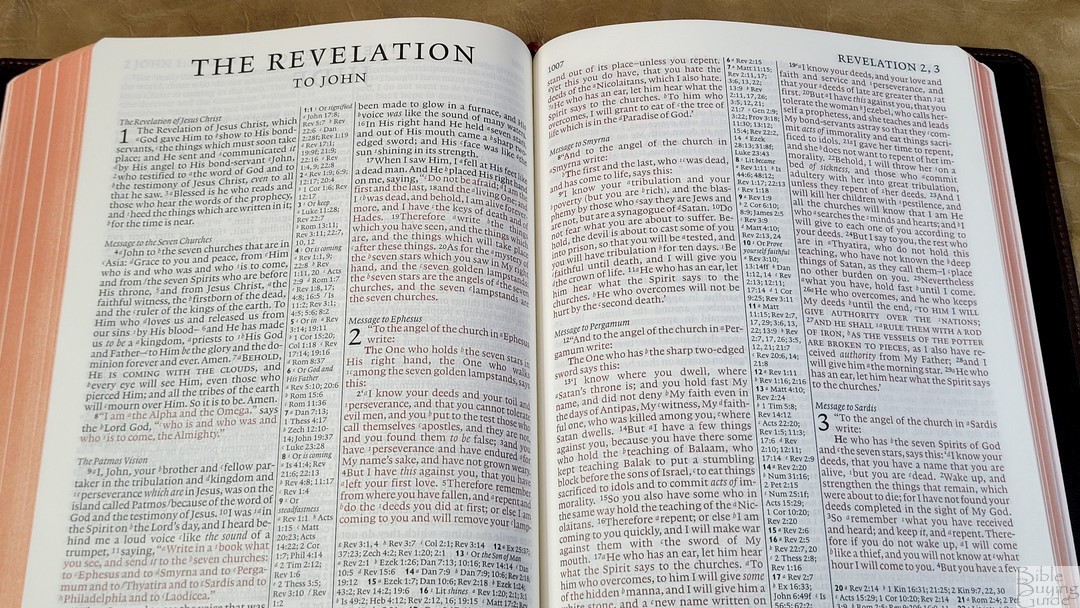
Verse numbers are light and small, so they can be difficult to find quickly. The footnote and reference keys are numbers and letters. They’re light and in italics. I found them easy enough to ignore while reading. The references and footnotes being in the center column and in the footer create two locations to search for them, but they’re not too difficult to locate.
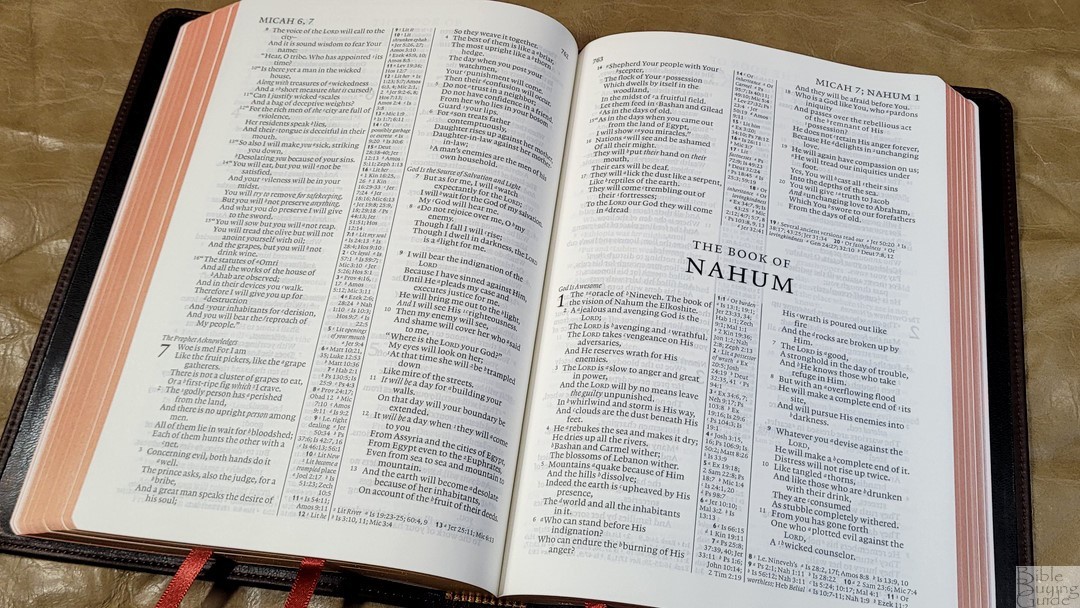
The poetic settings do create lots of lines with a single word. Rather than breaking the lines as stanzas, they go all the way to the end of the line. This is only a minor complaint and won’t keep me from reading it.
References and Footnotes
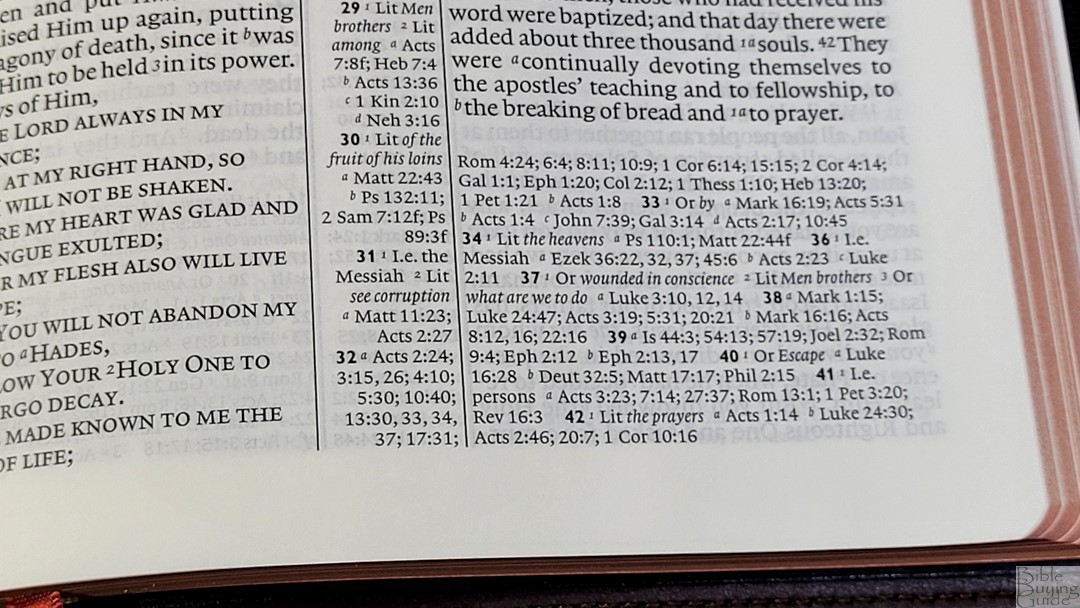
The translation footnotes are placed with the cross-references and include alternate renderings, literal renderings, manuscript variants, explanatory equivalents, explanations of Greek, Hebrew, and Aramaic words, weights, measures, time, etc. I find them helpful for study because they’re helpful for shedding light on the wording in the original languages.
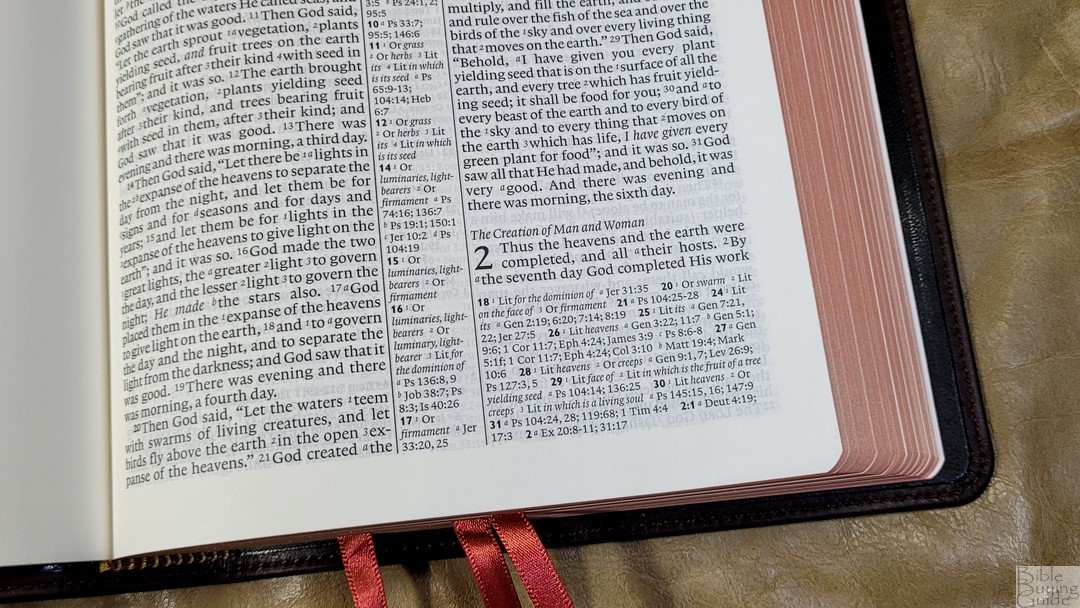
The cross-references for the left column appear at the top and are left-justified while references for the right column appear at the bottom of the column and are right-justified. If there are more than will fit in the center column they’re placed under the last verse. The verse numbers they correspond to are in bold.
Here are a few examples of references to help you compare:
- Genesis 1:1 – Ps 102:25; Isa 40:21; Jn 1:1, 2; Heb 1:10; Ps 89:11; 90:2; Acts 17:24; Rom 1:20; Heb 11:3; Job 38:4; Is 42:5; 45:18; Rev 4:11
- Deuteronomy 6:4 – Matt 22:37; Mk 12:29, 30; Luke 10:27; Deut 4:35, 39; John 10:30; 1 Cor 8:4; Eph 4:6
- Isaiah 9:6 – Is 7:14; 11:1, 2; 53:2; Luke 2:11; Jn 3:16; Matt 28:18; 1 Cor 15:25; Is 22:22; Is 28:29; Deut 10:17; Neh 9:32; Is 10:21; Is 63:16; 64:8; Is 26:3, 12; 54:10; 66:12
- Matthew 28:19 – Mk 16:15; Mt 13:52; Ac 1:8; 14:21; Mt 25:32; Lk 24:47; Ac 2:38; 8:16; Ro 6:3; 1 Cor 1:13, 15; Gal 3:27
- Mark 12:29 – Deut 6:4
- John 1:1 – Gen 1:1; Col 1:17; 1 John 1:1; 1 John 1:14; Rev 19:13; John 17:5; 1 John 1:2; Phil 2:6
- John 3:16 – Ro 5:8; Eph 2:4; 2 Thes 2:16; 1 Jn 4:10; Rev 1:5; Ro 8:32; 1 Jn 4:9; Jn 1:18; 3:18; 1 Jn 4:9; Jn 3:36; 6:40; 11:25
- Acts 2:38 – Mark 1:15; Luke 24:47; Acts 3:19; 5:31; 20:21; Mark 16:16; Acts 8:12, 16; 22:16
- Romans 10:9 – Mt 10:32; Lk 12:8; Ro 14:9; 1 Cor 12:3; Phil 2:11; Ac 16:31; Rom 4:24; Ac 2:24
- 1 John 1:1 – John 1:1; I John 2:13, 14; Acts 4:20; I John 1:3; John 19:35; 2 Peter 1:16; I John 1:2; John 1:14; I John 4:14; Luke 24:39; John 20:27; John 1, 4
Concordance
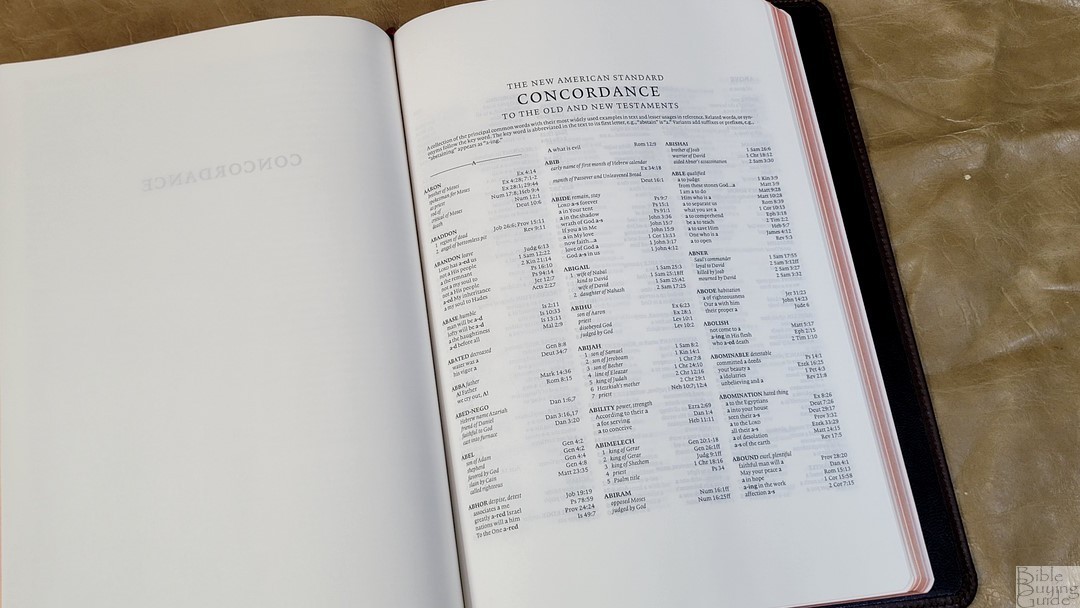
The concordance is 136 pages with three columns per page. Although the entries are the same, this concordance has a different layout than the one in the Pitt Minion. I think it’s the one from the NASB wide margin (but I don’t have a Cambridge NASB wide margin to confirm). It includes related words or synonyms following the keywords. It’s a decent concordance for study and sermon prep. It has 1 1/4″ of space at the top and bottom of the page. I think this is due to the formatting of the wide margin concordance, but it gives space to write your own references, definitions, etc.
Sample entries include:
- Christ Messiah – 17
- Christian follower of Christ– 3
- Faith believe, trust– 36
- Faithful loyal, trustworthy – 15
- Faithfulness loyalty – 7
- Faithless unbelieving – 4
- God Deity, Eternal One– 37
- God false diety, idols – 8
- Goddess female diety – 3
- Godless pagan, without God – 5
- Godliness holiness– 5
- Godly holy – 6
- Praise (n) acclamation, honor – 10
- Praise (v) extol, glorify – 12
- Pray ask, worship – 19
- Prayer – 15
Bible Atlas

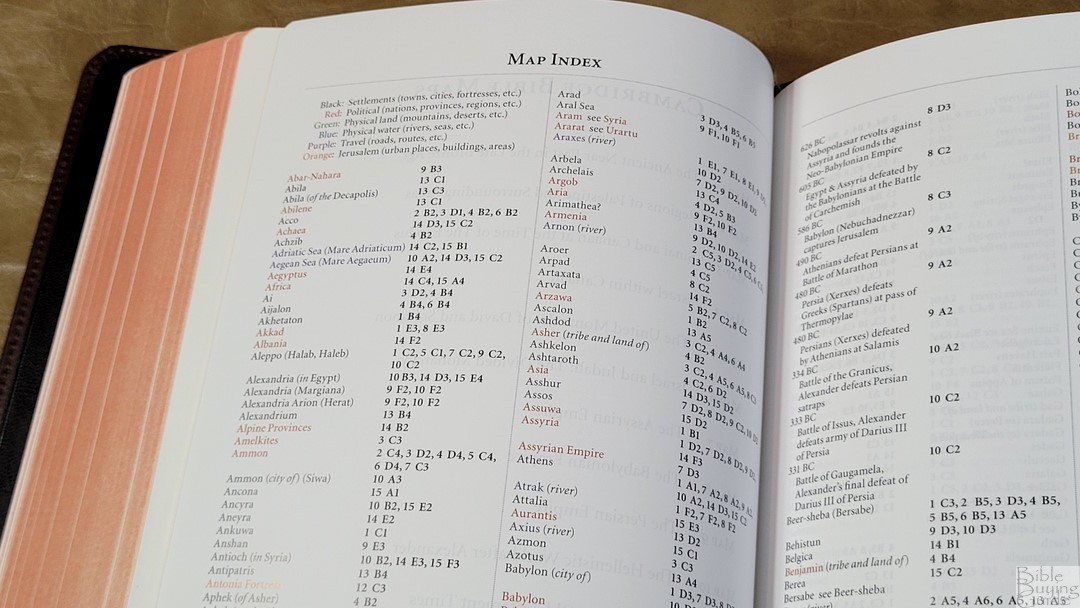
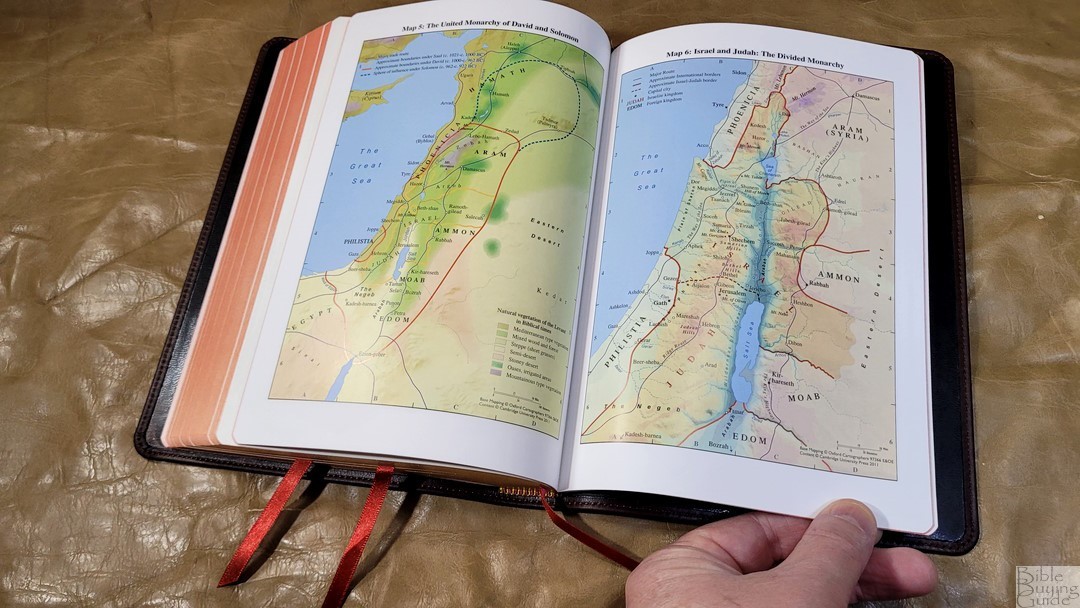
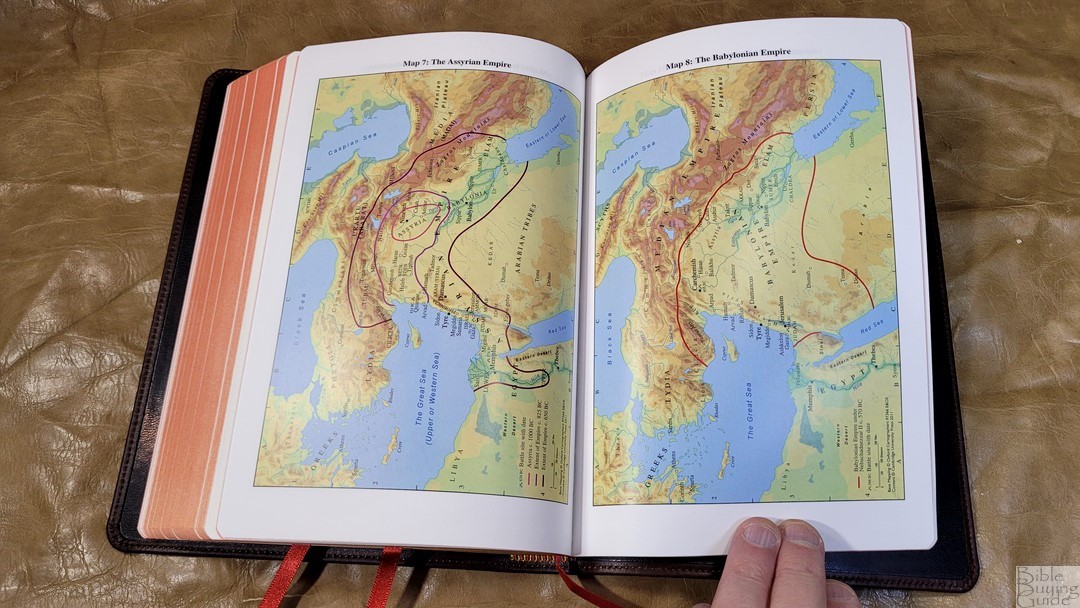
In the back are 15 full-color maps with an 8-page color-coded map index. The maps are colorful and look fantastic. I find them easy to read and use. They’re printed on thick, semi-glossy paper. They show routes, birders, water, distance topography, vegetation, cities, dates, battle sites, etc. The color-coded index shows settlements, political, physical land, physical water, travel, and Jerusalem.
Maps include:
- The Ancient Near East in the Late Bronze Age
- Regions of Palestine and Surrounding Areas
- Sinai and Canaan at the Time of the Exodus
- Israel within Canaan
- The United Monarchy of David and Solomon
- Israel and Judah: The Divided Monarchy
- The Assyrian Empire
- The Babylonian Empire
- The Persian Empire
- The Hellenistic World after Alexander
- Jerusalem in Old Testament Times
- Jerusalem in New Testament Times
- Palestine in the New Testament
- The Roman Empire
- The Eastern Mediterranean in the First Century AD
Comparisons
Here’s a look at how the NASB Diadem in brown calfskin compares to several other Bibles from Cambridge.
Cambridge Pitt Minion
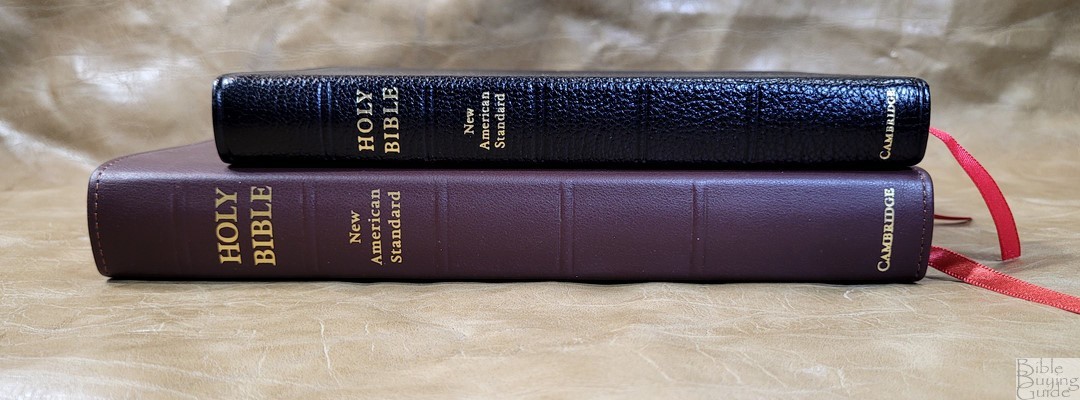
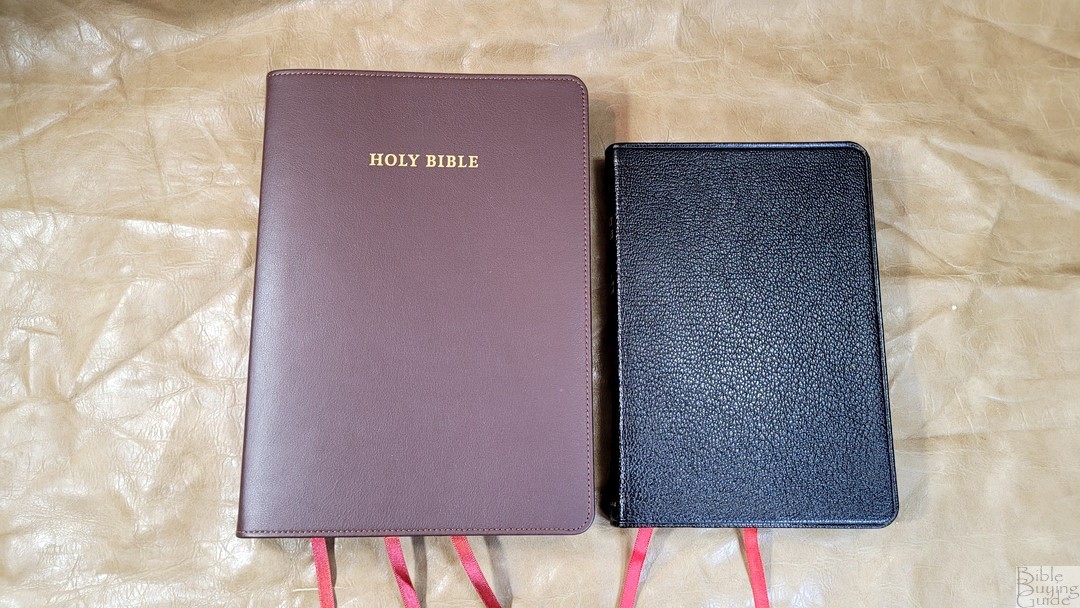
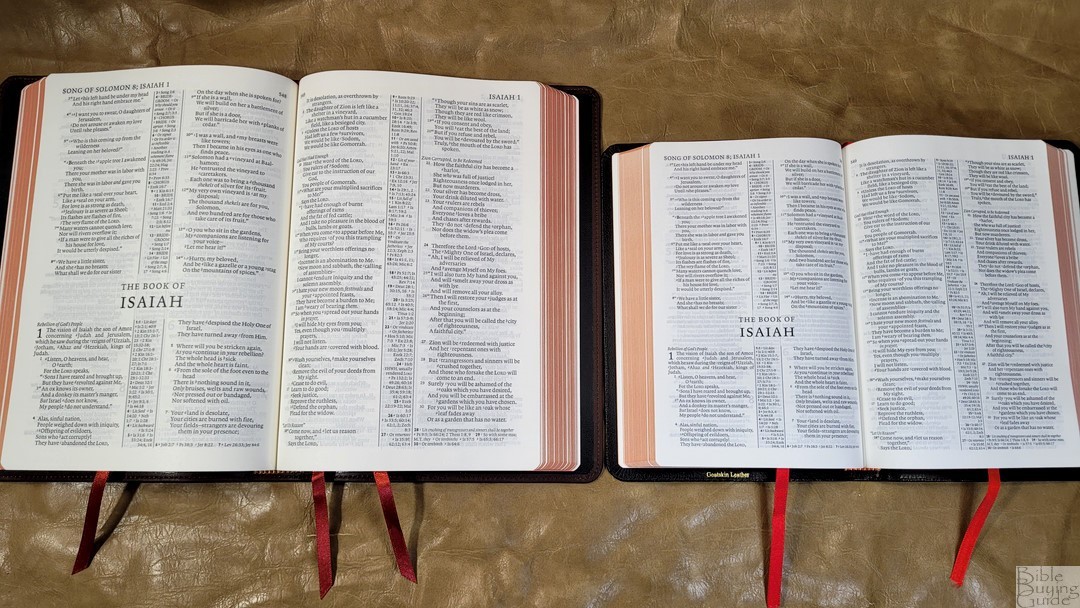
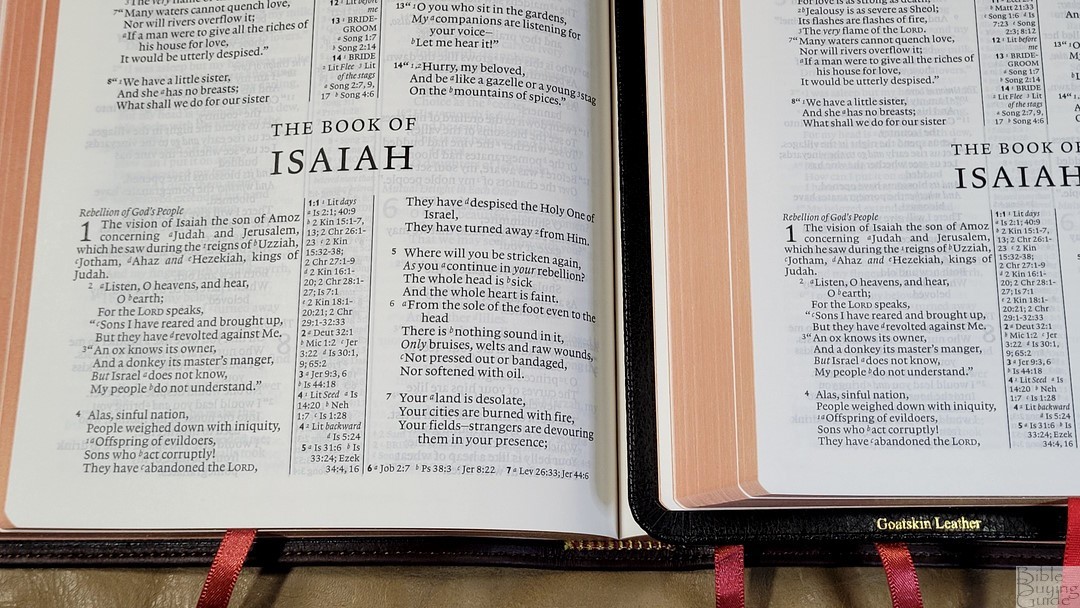
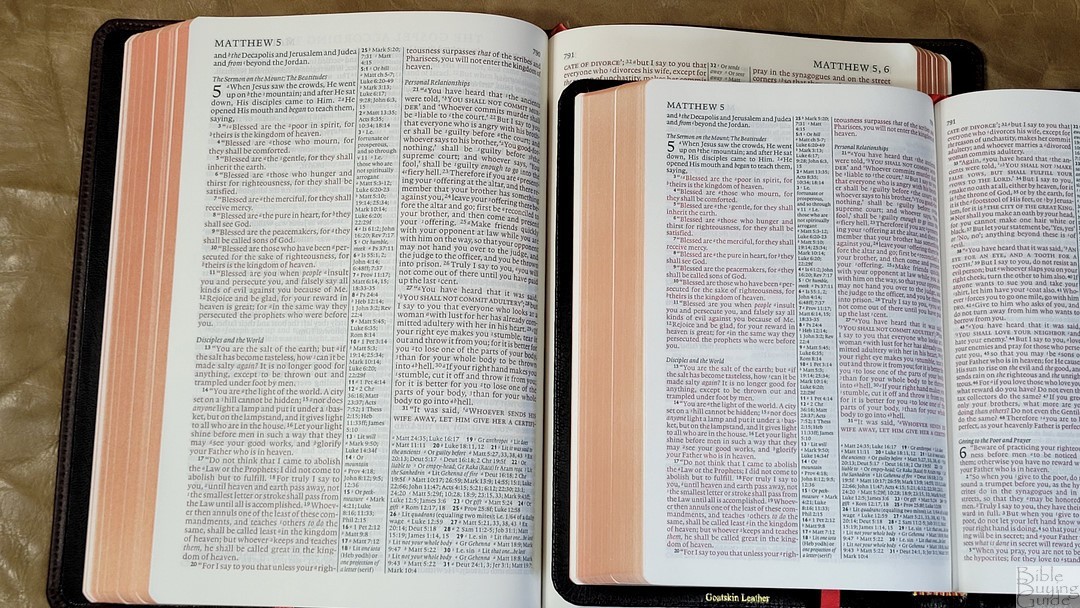
The NASB Pitt Minion is the Bible the Diadem is based on. It has a smaller footprint and it’s thinner (it has 28gsm paper vs the 32gsm in the Diadem). The font size is 6.75 with a 7-point leading. Its concordance has the same entries, but the PM is in two columns and has a larger font. The maps are the same, but they’re printed on matte paper (this is my favorite paper for maps). The PM has two ribbons instead of three.
Cambridge Clarion
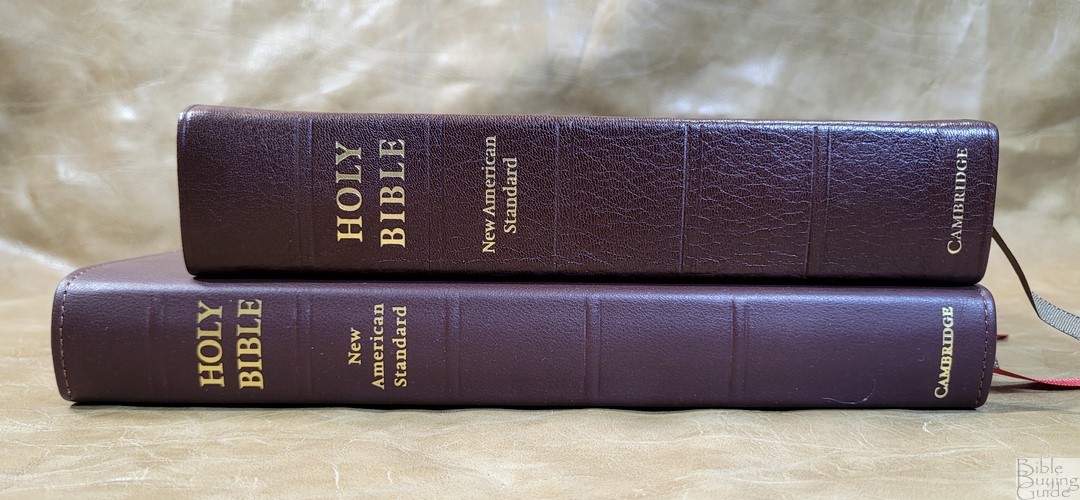
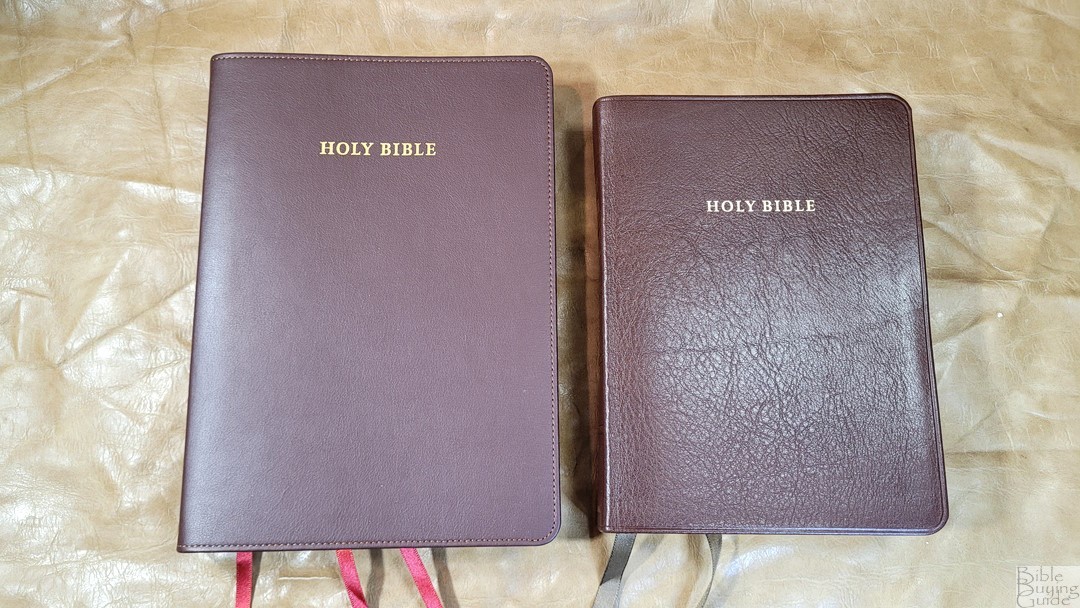
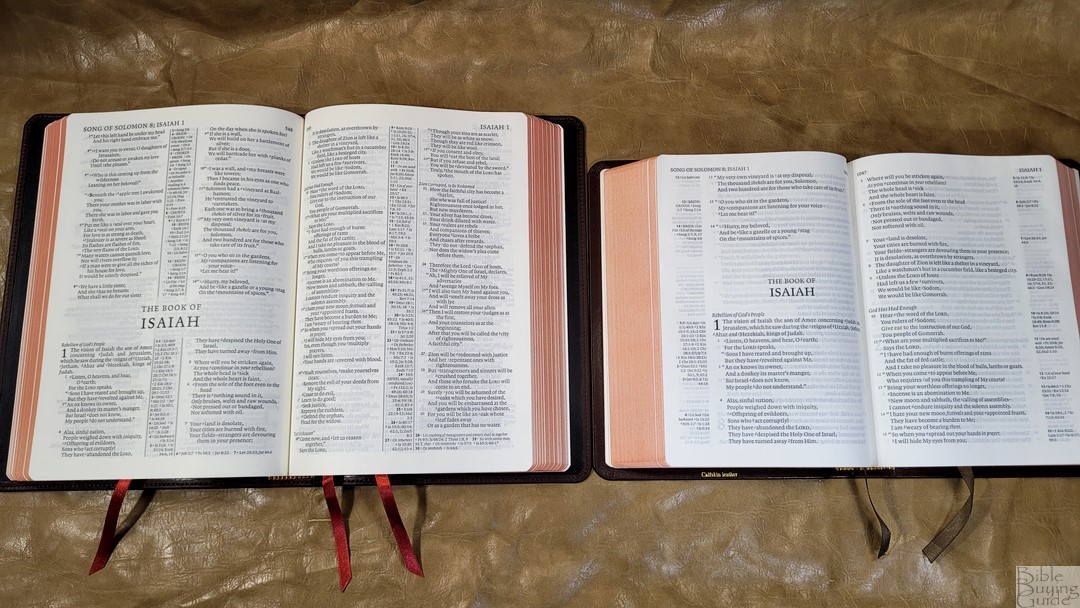

The NASB Clarion is also available in brown calfskin. This calfskin is stiffer with a paste-down liner and a more pronounced grain. It has a smaller footprint, but it’s a lot thicker. The font is noticeably larger and the single-column poetry is cleaner. They have the same references, footnotes, concordance, and maps. The paper is 28gsm Indopaque. The print isn’t as dark as the Diadem.
Cambridge Wide Margin
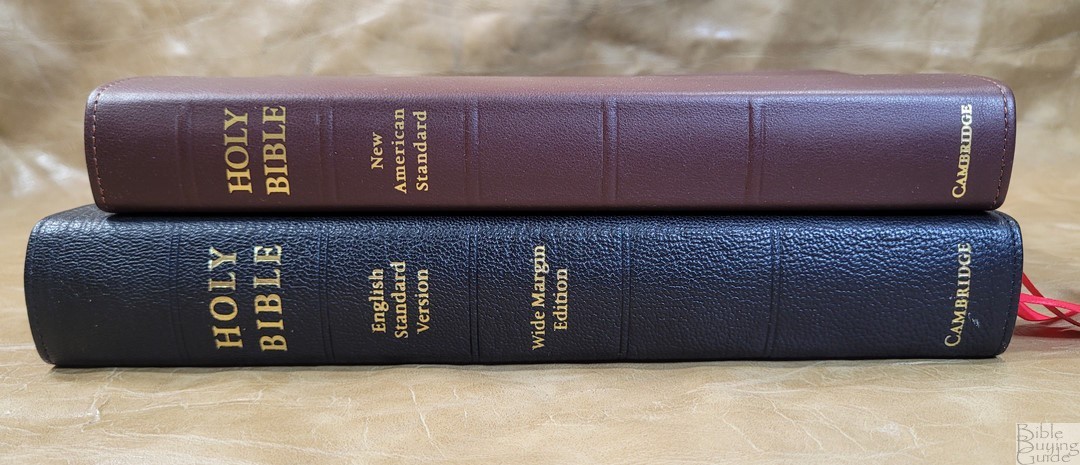
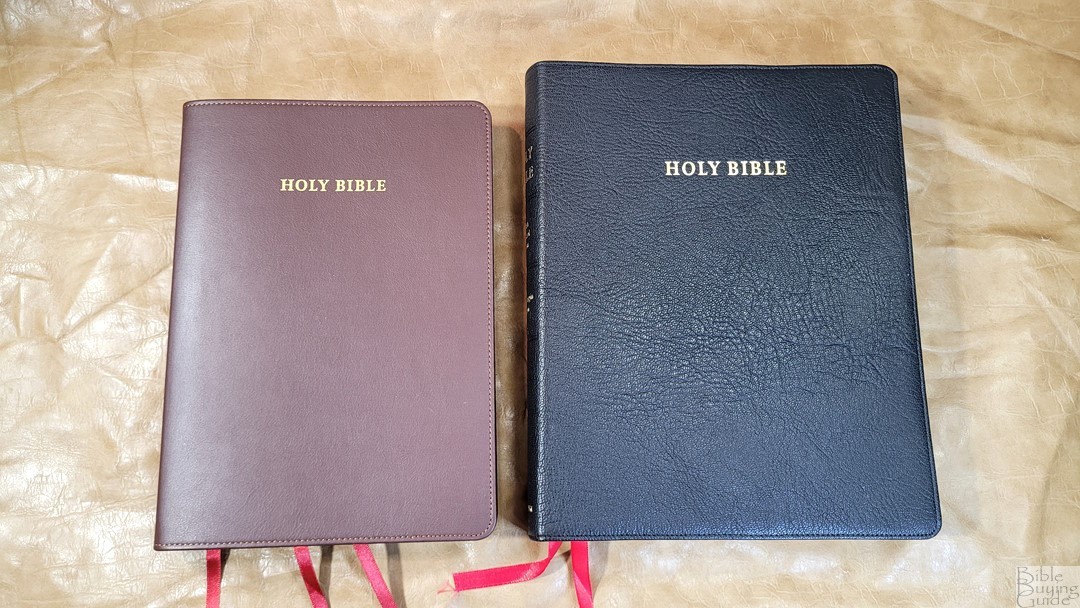
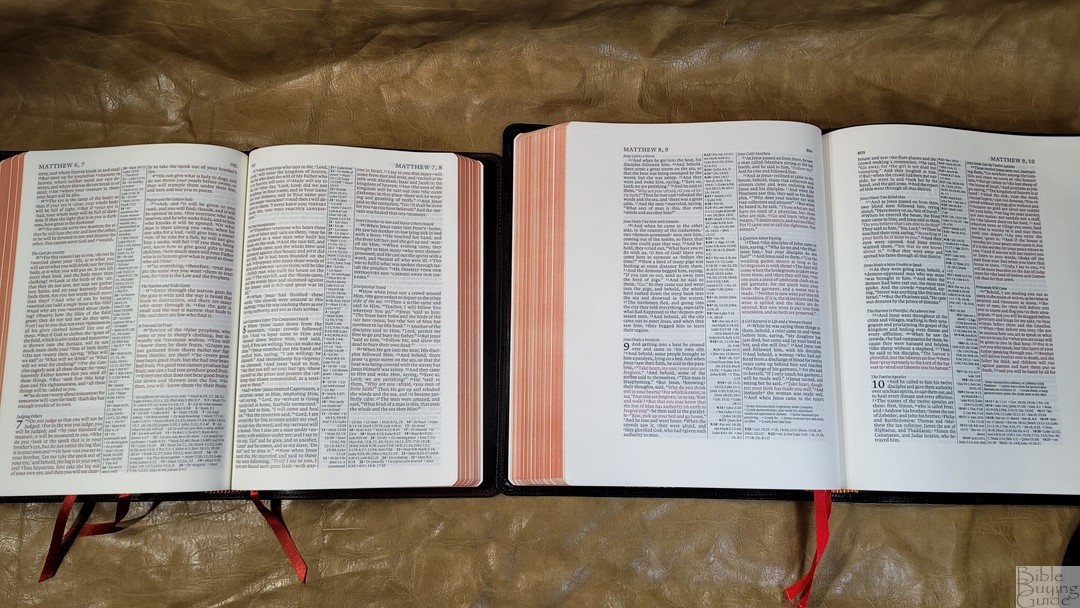
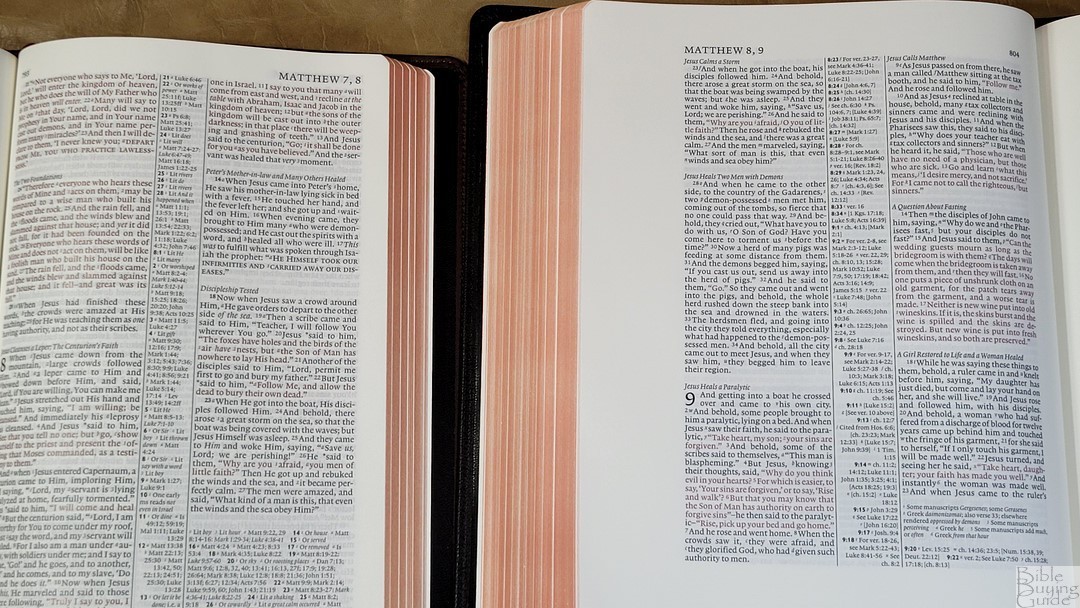
The Cambridge Wide Margin also has the same pagination. I don’t have the NASB to compare, but the ESV is a good example. The paper is thicker and the font is smaller. This footprint is larger and it’s thicker due to the wide margins and thicker paper. Its red letter is bolder, but not as bright as the Pitt Minion. They make an excellent combo. Anyone that finds the font of the wide margin to be large enough would also find the Diadem’s font large enough.
ESV Diadem
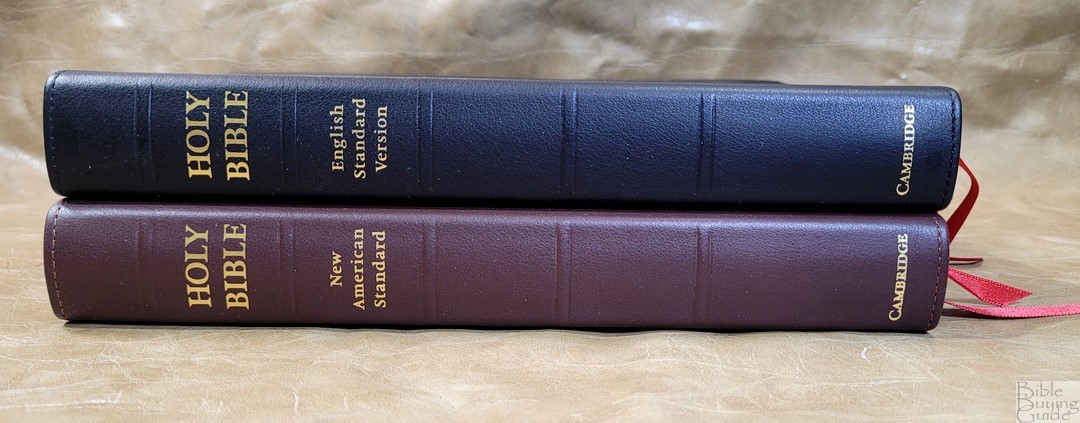
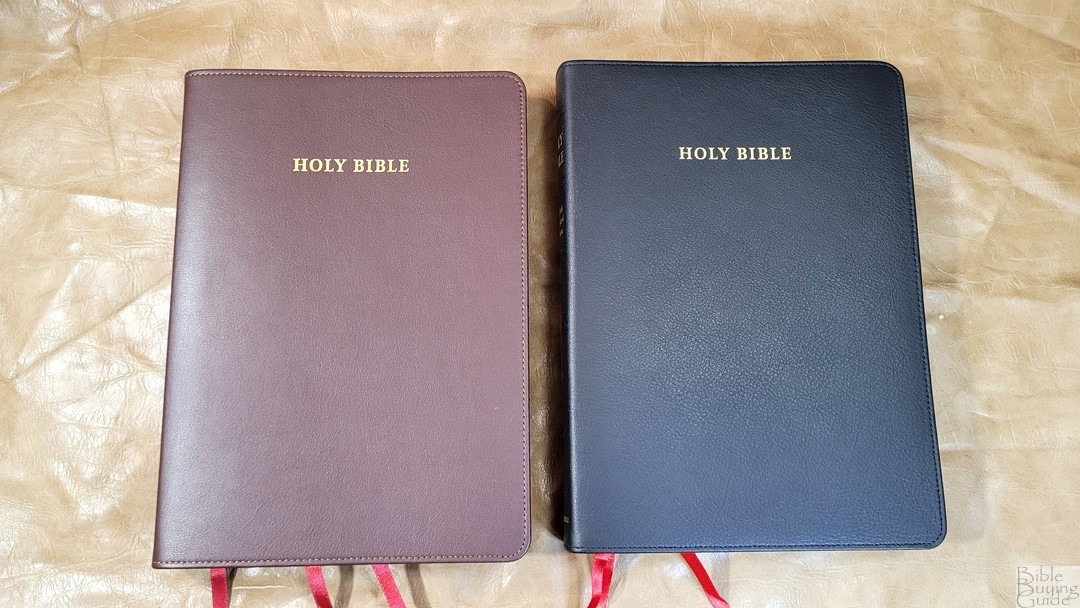
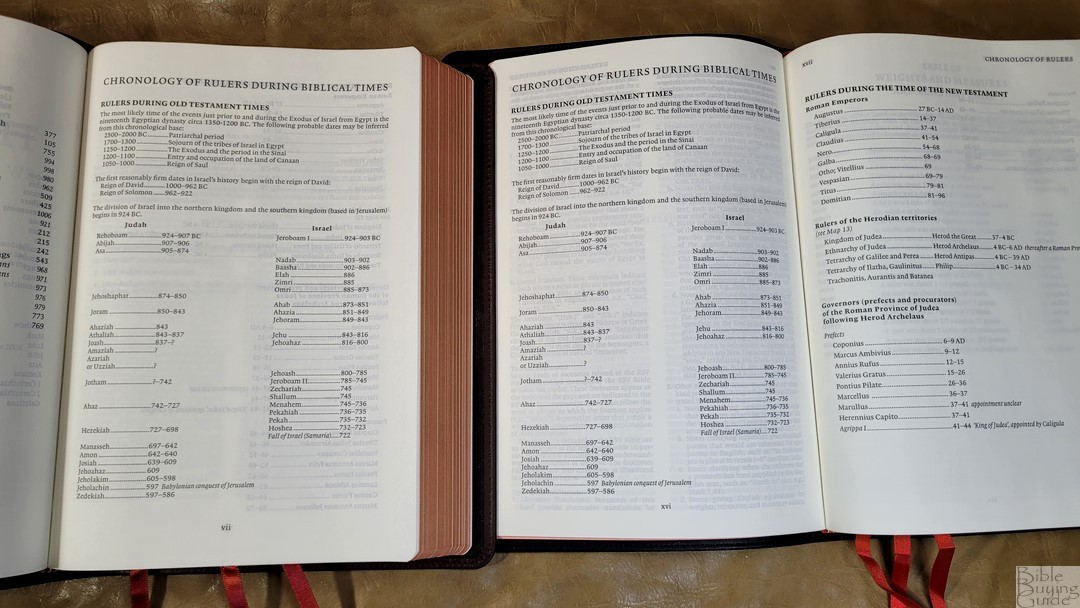
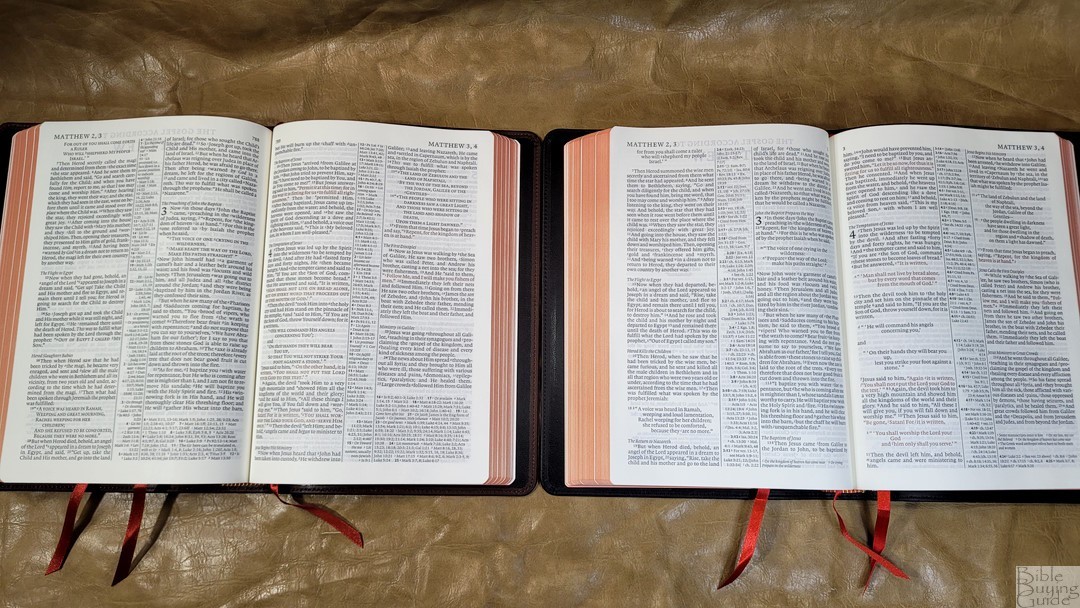
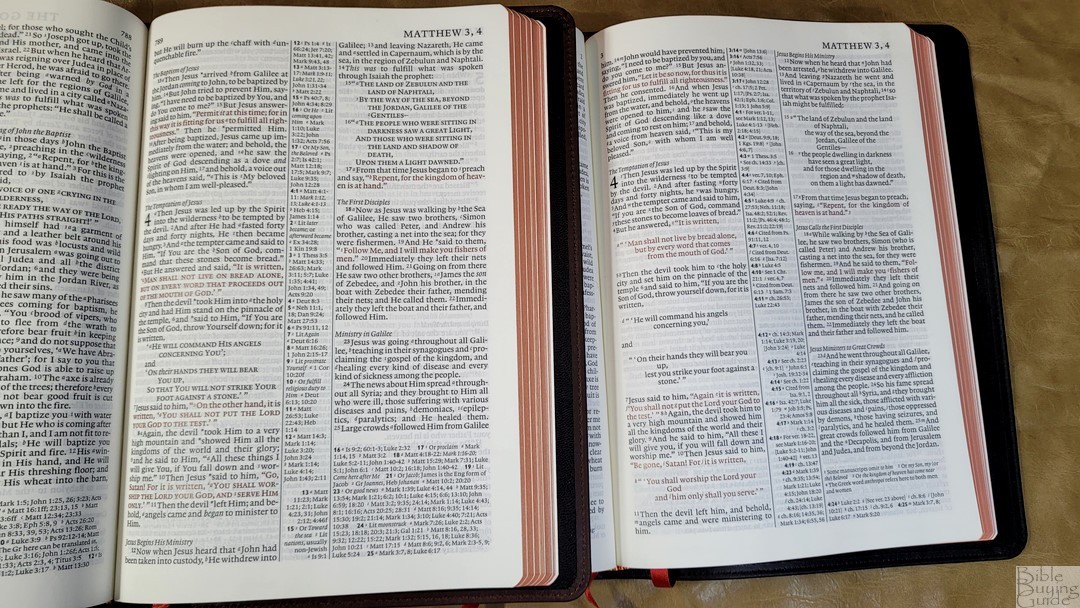
The ESV Diadem is almost identical to the NASB but with a few extra tools and no pages for notes. It adds a Table of Weights and Measures. The rest is the same, including the extra space at the top and bottom of the concordance. My review copy is black calfskin.
Conclusion

NASB Diadem in brown calfskin is an excellent hand-size Bible for all-around usage. It’s larger than the Pitt Minion, so it’s easier to see and use. The pagination matches the Pitt Minion and Wide Margin, making a great combo if you have the other editions. It’s thinner than the Clarion, making it easier to handle. If you don’t need a large print, the NASB Diadem can easily be the only Bible you’d need.
_________________________________________________________
This Bible is available at (includes some affiliate links)
and many local Bible bookstores
_________________________________________________________
provided this Bible in exchange for an honest review. I was not required to give a positive review, only an honest one. All opinions are my own.


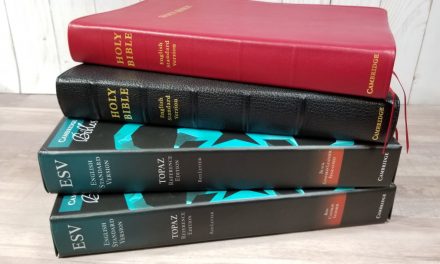
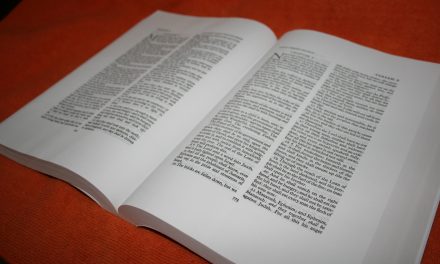
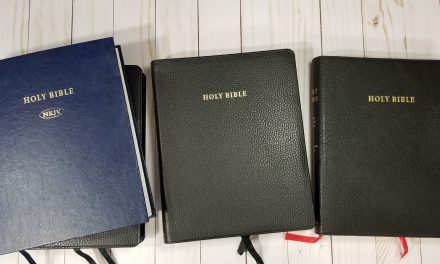
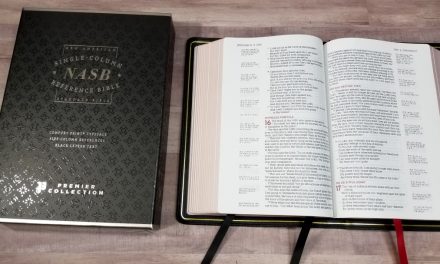






Another excellent and thorough review; thank you for all your hard work and efforts, they are appreciated.
Thanks Michael! I appreaciate it!